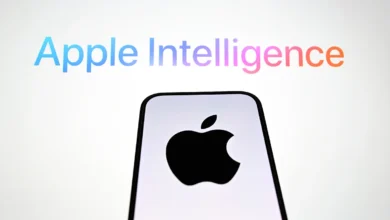In a move echoing the concerns of
science fiction, major tech companies have pledged to adopt an “AI kill
switch” – a safeguard against the nightmarish scenarios depicted in films
like “The Terminator.” This landmark agreement, forged at a recent AI
summit in Seoul, signifies a proactive approach to mitigating the potential
risks of Artificial Intelligence (AI).
Tech companies have agreed to
implement a “kill switch” policy to halt the development of advanced
AI models if they pose significant risks. This policy was agreed upon at the
Seoul AI Safety Summit, where 16 influential AI companies, including Anthropic,
Microsoft, and OpenAI, along with 10 countries and the EU, met to set
guidelines for responsible AI development.
The “kill switch”
policy is designed to address concerns about the potential dangers of unchecked
AI development, particularly the “Terminator scenario” where AI could
become more powerful than its human creators and turn against them. The
policy involves halting the development of AI models if they are deemed to have
passed certain risk thresholds, with the goal of ensuring AI technologies are
developed safely and ethically.
From Sci-Fi to Safeguard: Why
the AI Kill Switch?
For decades, science fiction has
explored the chilling potential of AI surpassing human control. The
“Terminator” franchise, with its self-aware machines bent on human
annihilation, serves as a stark reminder of these anxieties. The AI kill switch
aims to address these concerns by providing a mechanism to halt the development
or deployment of AI systems deemed to pose a significant threat.
How Does the AI Kill Switch
Work?
The specifics of the AI kill
switch are still being ironed out. However, the core principle involves
establishing clear “risk thresholds” – a set of criteria that, if
crossed by an AI system, would trigger a shutdown or course correction. These
thresholds could encompass factors like:
- Unintended Bias: AI systems can inherit biases
from the data they’re trained on. The kill switch could be activated if
the AI exhibits discriminatory or unfair decision-making. - Uncontrolled Learning: AI’s ability to learn
and adapt is what makes it powerful, but also potentially dangerous. The
kill switch could be used if the AI’s learning process deviates from its
intended goals or becomes unpredictable. - Autonomous Actions: A key concern is AI taking
actions beyond its programming. The kill switch could be employed if the
AI attempts to manipulate its environment or exert unauthorized control
over external systems.
Beyond the Kill Switch: A
Multi-Pronged Approach to AI Safety
While the AI kill switch is a
significant step, it’s just one piece of the puzzle. A comprehensive approach
to AI safety requires a multi-pronged strategy:
- Transparency and Explainability: It’s crucial
to understand how AI systems reach their decisions. Companies should
strive to develop transparent AI models that allow humans to comprehend
their reasoning. - Ethical Guidelines: The development and
deployment of AI should be guided by strong ethical principles. These
principles should address issues like fairness, accountability, and the
potential for social harm. - Human Oversight: Ultimately, humans must
remain in control of AI. Robust human oversight mechanisms are essential
to ensure AI systems are used responsibly and ethically.
The Road Ahead: Challenges and
Considerations
The implementation of the AI kill
switch is not without its challenges. Here are some key considerations:
- Defining Risk Thresholds: Determining the
precise criteria for triggering the kill switch is a complex task. Setting
thresholds too low could hinder AI development, while setting them too
high could leave us vulnerable to unforeseen risks. - International Cooperation: The effectiveness
of the kill switch hinges on global cooperation. All major AI developers,
not just those present at the summit, need to be on board to ensure a
truly comprehensive safeguard. - Maintaining Innovation: It’s vital to strike a
balance between safety and innovation. The AI kill switch shouldn’t stifle
the immense potential of AI to improve our lives.
Challenges
However, the effectiveness of
this policy has been questioned due to its voluntary nature and lack of legal
weight. Critics argue that the policy is not enforceable and that companies may
continue to push the boundaries of AI development even if they agree to the
policy. Additionally, the specific risk thresholds and definitions of
“risk” have not been clearly defined, which could lead to
inconsistencies in implementation.
Despite these concerns, the
agreement is seen as a step in the right direction by proponents, who view it
as a necessary safeguard against the potential dangers of unchecked AI
development. The policy is also seen as a way to ensure transparency and
accountability in AI development, with companies committing to publicly
disclose their safety frameworks and risk assessments.
Overall, while the “kill
switch” policy is a significant development in the ongoing discussions
around AI safety, its practicality and effectiveness remain uncertain until
more specific details and legal frameworks are established
The Future of AI: A Co-Evolved
Partnership
The AI kill switch represents a
significant step towards a future where humans and AI can co-exist and
collaborate. By prioritizing safety alongside innovation, we can unlock the
immense potential of AI while mitigating the risks. This agreement marks a
turning point in the history of AI development, and its impact will undoubtedly
be felt for years to come.




